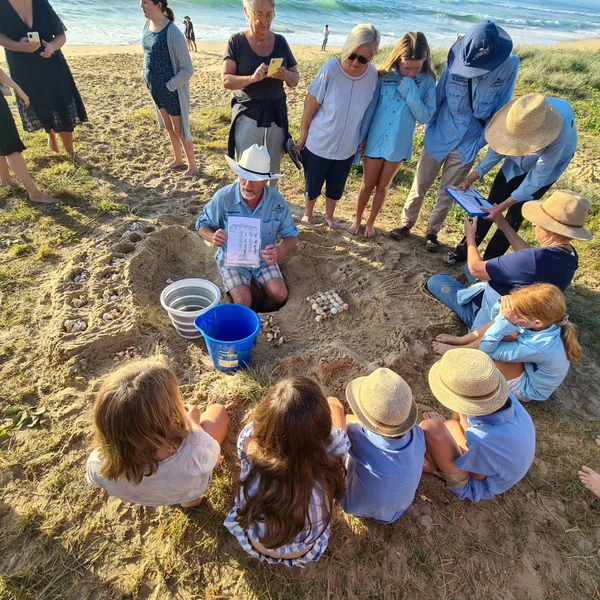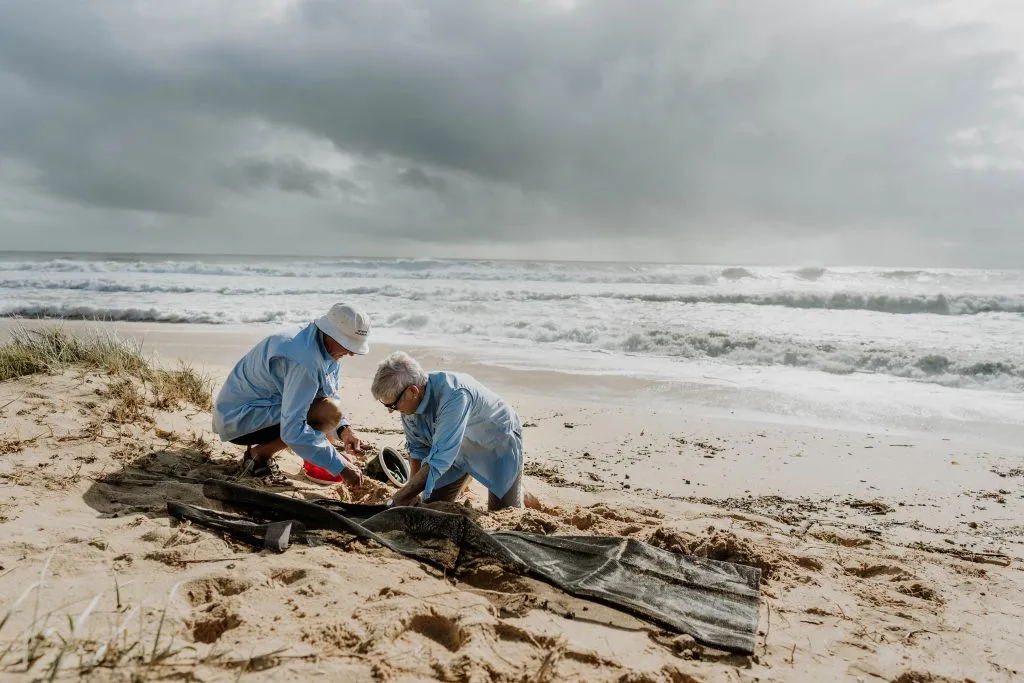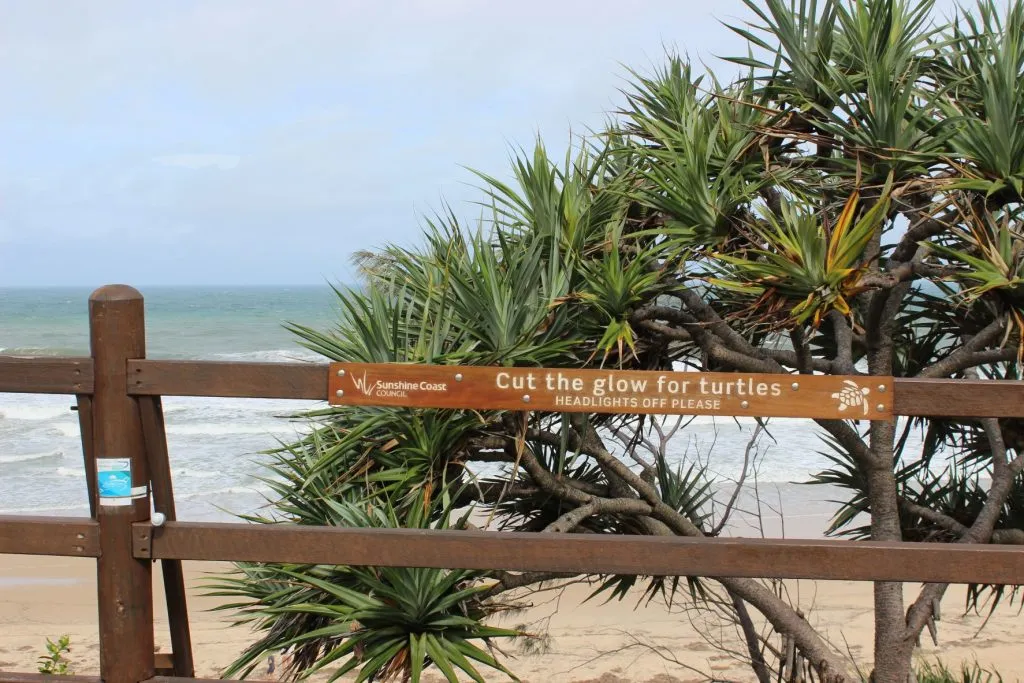Point Cartwright drivers cut the glow for turtles

We can all do our bit for the environment and a simple but effective sign may have just helped some of us save the lives of turtle hatchlings emerging from their nests at Point Cartwright.
Today on World Turtle Day (Monday May 23, 2022), Sunshine Coast Council has thanked evening visitors to Point Cartwright carpark who have risen to the call to switch off their headlights when parked at the popular lookout spot.
This past turtle season council, in partnership with the Buddina TurtleCare group, trialled a solution to reduce headlights shining onto turtle nesting and shoreline areas.
A natural timber sign was installed asking drivers to 'Cut the Glow - Headlights off please' in reflective paint.

Community response to the sign was tracked over the peak nesting season (December – January) and results showed a 30 per cent decrease in night-time light to the area.
Sunshine Coast Division Council Division 4 Councillor Joe Natoli championed the project.
“Artificial light from sources such as car headlights and buildings interfere with nesting turtles and their hatchlings’ ability to navigate to and from the sea,” Cr Natoli said.
“This year, council worked with Buddina TurtleCare to find a solution to reduce light interference that would work for both turtles and our community.

“Thank you to the carpark visitors for making the effort to change their behaviour and be a turtle friendly community.”
Buddina TurtleCare Group Leader Lesley Dimmock said the issue of headlights shining on the nesting and near-shore environment at Point Cartwright had been a problem discussed and considered during their night-time beach patrols for many years.
“The new signage is a welcome initiative,” Mrs Dimmock said.
“It’s a great opportunity to confirm that contributions to support a dark nesting habitat, can be as simple as turning headlights off, particularly while remaining in a parked vehicle.
“With its educational message being delivered day and night, visitors to this scenic outlook gain an appreciation of this less known, but important function of our beach.
“Combined with further initiatives to reduce skyglow and direct light at night, our dark nesting beaches can continue to provide the critical habitat for our endangered loggerhead turtles.”

Sunshine Coast Council Conservation Officer Kate Hofmeister said the natural looking sign intended to preserve both the natural amenity values of the area and contribute to turtle conservation.
“Only one in 1000 turtle hatchlings survive to adulthood,” Ms Hofmeister said.
“So every egg laid and every hatchling that makes it to the ocean is vitally important to the ongoing survival of this endangered species.
“We installed sensors that tracked the light every 10 minutes at night-time over the two, 45-day study periods and, while there were limitations to our study, we recorded a 30 per cent reduction in the night-time lighting across that time.
“This evidence suggests the signage changed community behaviour and we are very grateful for that as we strive to find solutions to allow our residents and our wildlife to live together in harmony.
“We are yet to determine the next steps for the signage, as road-ecology studies indicate that wildlife signage can become 'white noise' and reduce its effectiveness if left in place long term.
“In the future, we may remove the signs temporarily over winter, and re-install for summer.”
Council has also partnered with Griffith University to monitor community thoughts on the lighting change at Buddina and Mudjimba beaches.
Have your say on the turtle-sensitive, motion-activated streetlight trial at haveyoursay.sunshinecoast.qld.gov.au/turtlecare-light-study-buddina
End of 2021-22 season figures:
- 3642 hatchlings released to the ocean (with three nests still to emerge)
- 62 loggerhead nests and three green turtle nests on Sunshine Coast beaches
- 18 nests relocated due to ex-Tropical Cyclone Seth
- Highlights: the incredibly resilient and dedicated TurtleCare volunteers protected turtle nests during the crazy weather events of ex-Tropical Cyclone Seth. During rain, wind and large swells the volunteers were out on our beaches protecting nests to give the hatchlings the best chance at survival. They were also involved in this year's relocation of the Queensland Museum Hatchery nests. The eggs were moved to Warana to incubate naturally after the floods impacted the Queensland Museum.
To report turtle tracks, new nests and emerging hatchlings on the southern end of the coast, call Sunshine Coast Council’s Turtle Care hotline 0437 559 067 or for sightings from Mooloolaba north, call Coolum and North Shore Coast Care on 0403 370 157.
Find out more about our marine turtles, the TurtleCare volunteer program and the tracking projects.